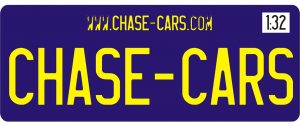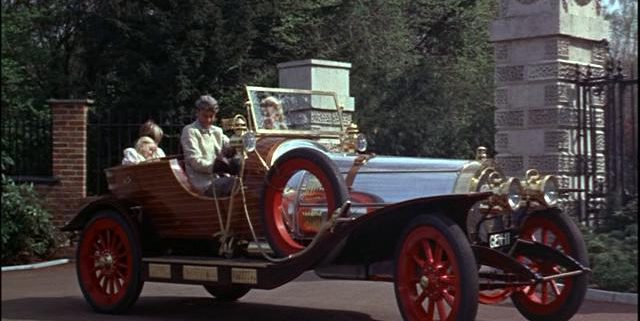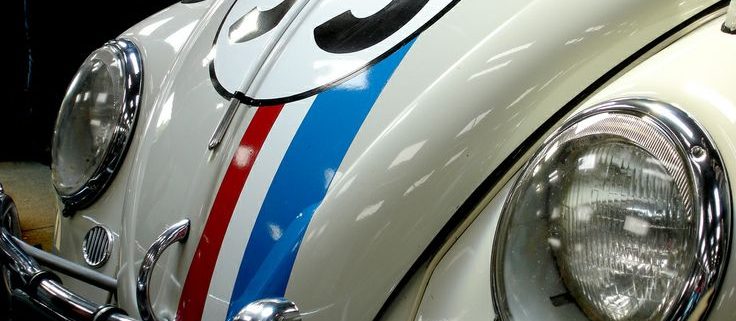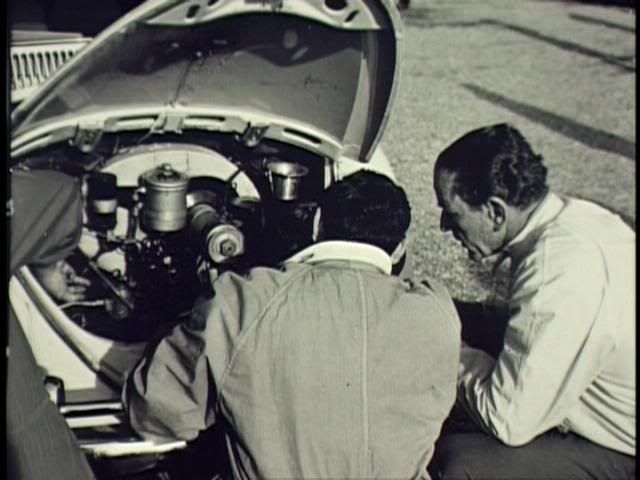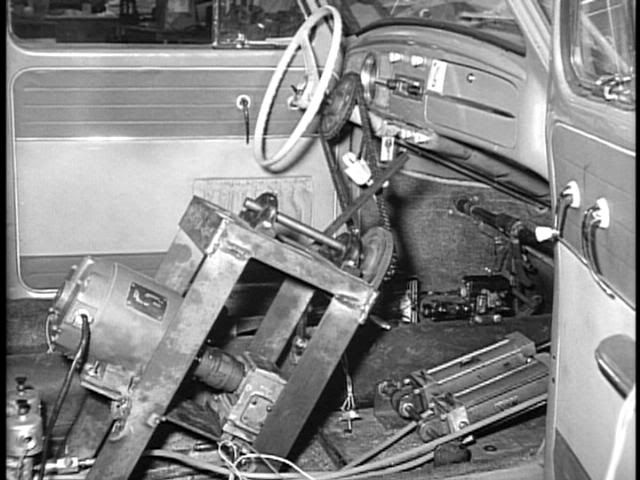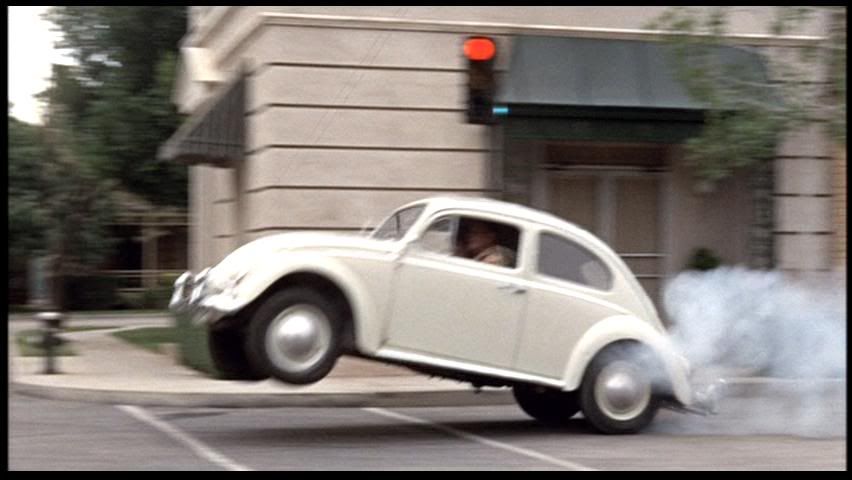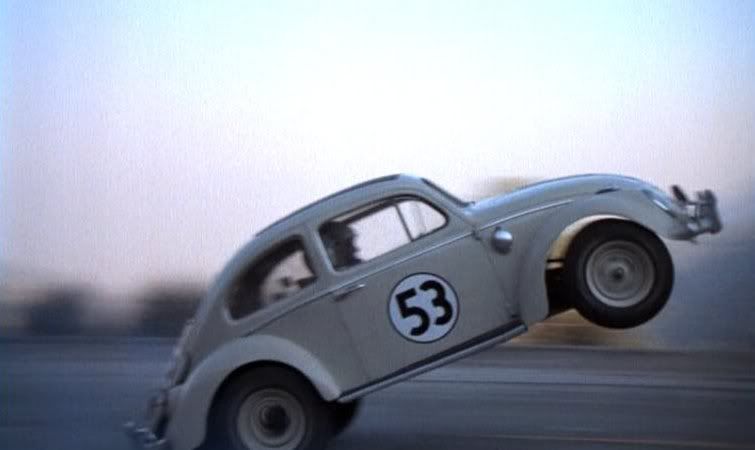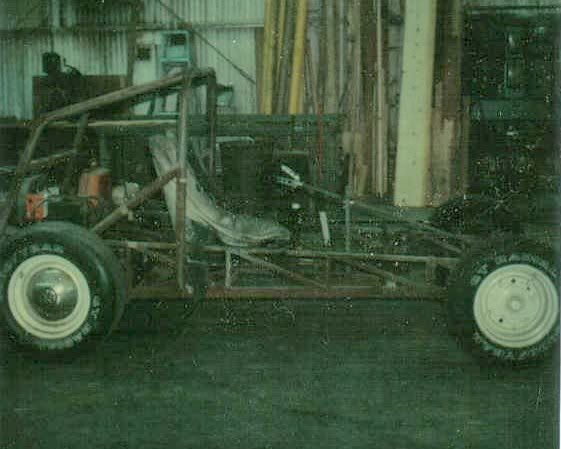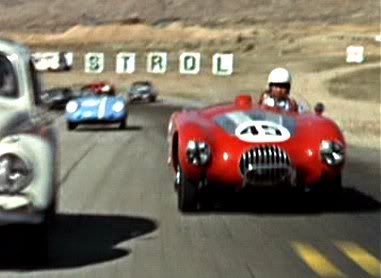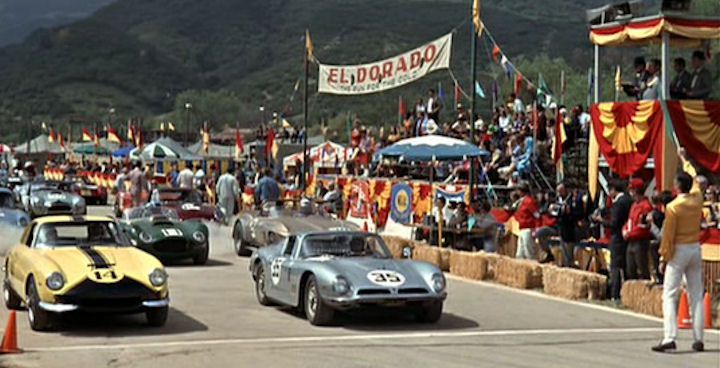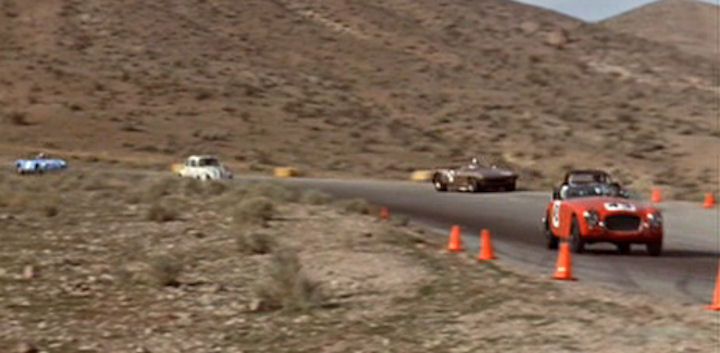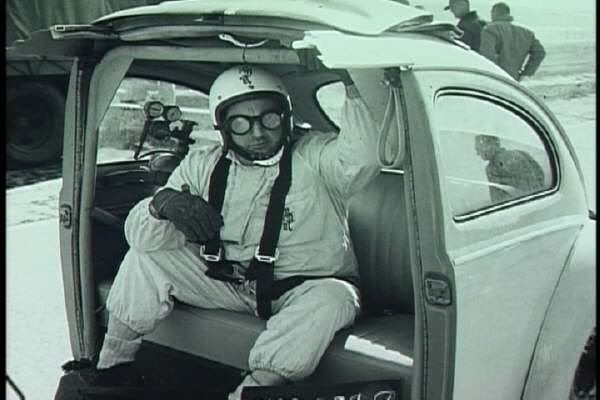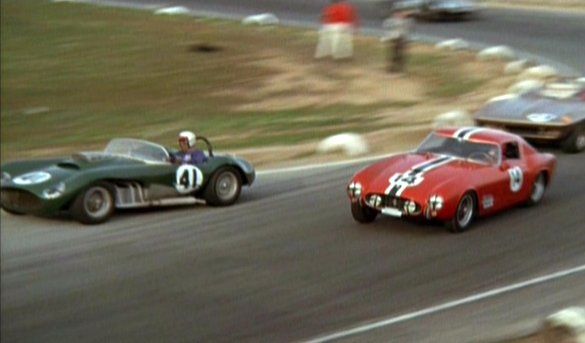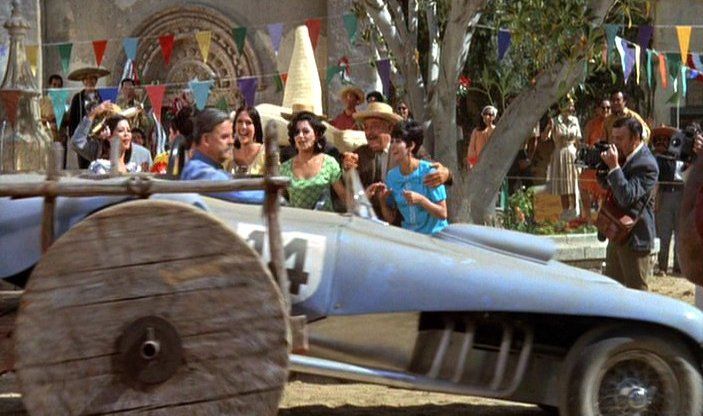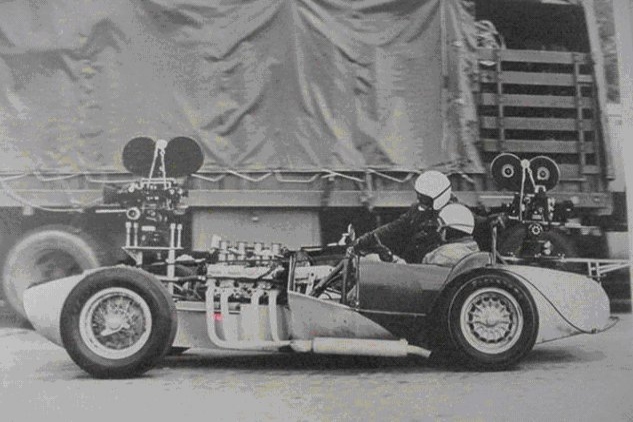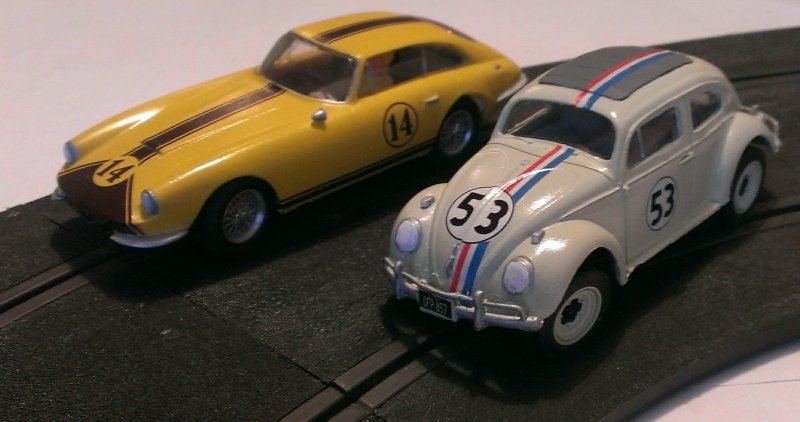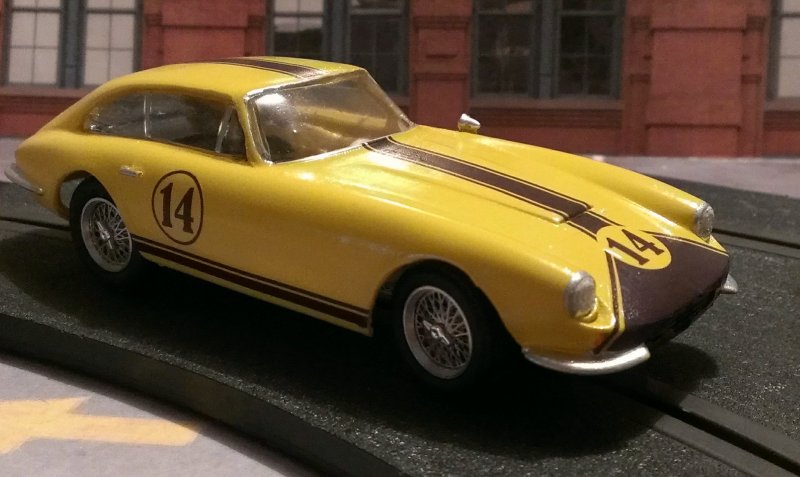Chitty Chitty Bang Bang
You’ve all seen this, right?
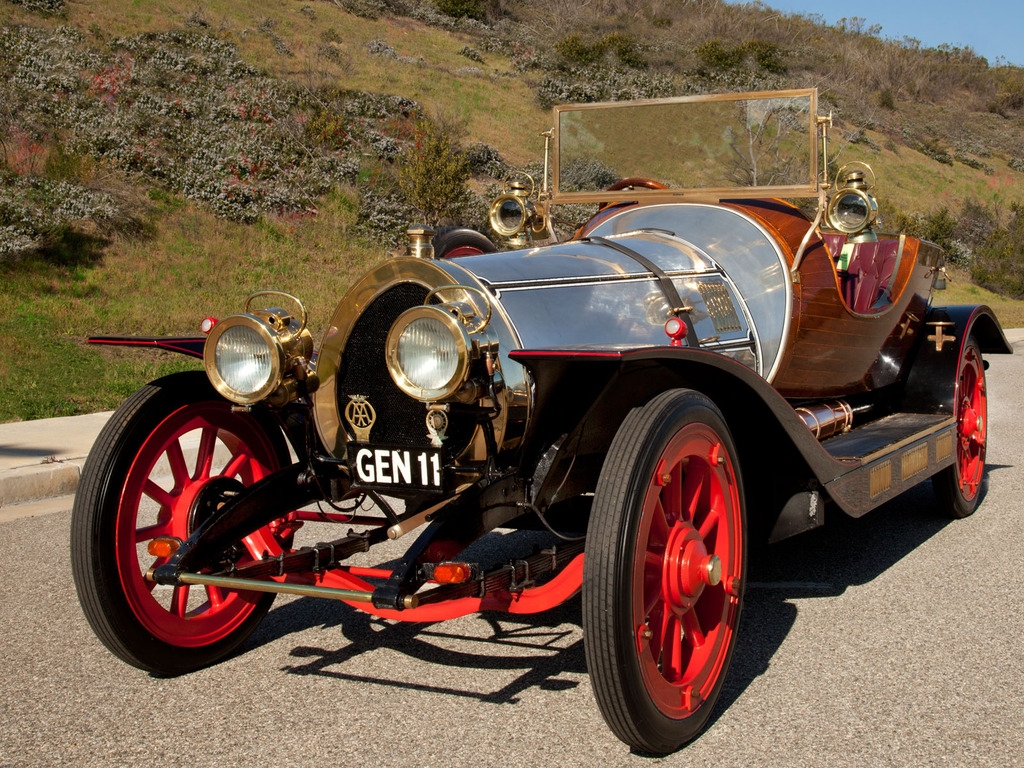
Although as a child I loved Ian Flemming’s book more, and especially John Burningham’s illustrations. If you haven’t read it you should really search out a copy.
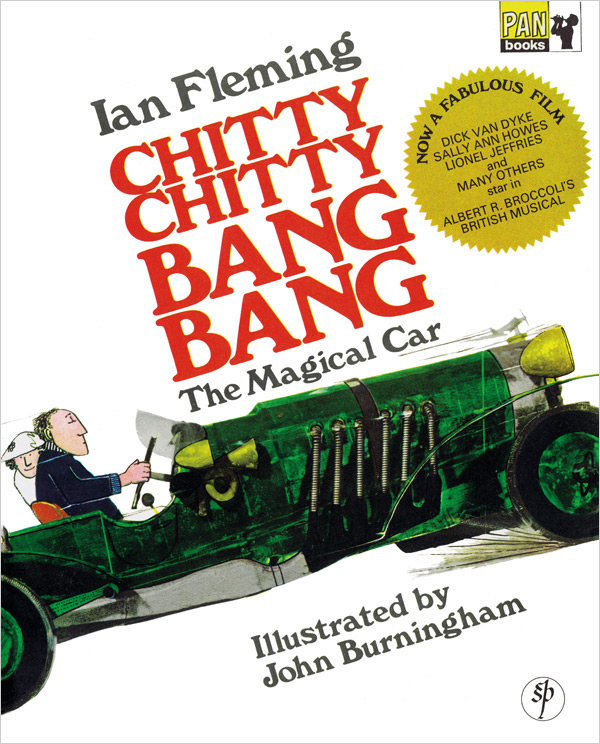
It was based on the racing car (actually cars) built by Count Louis Zborowski in the 1920s but it was Alan Mann in England who was building those red and gold Ford racing cars that was asked to build a car for the film.
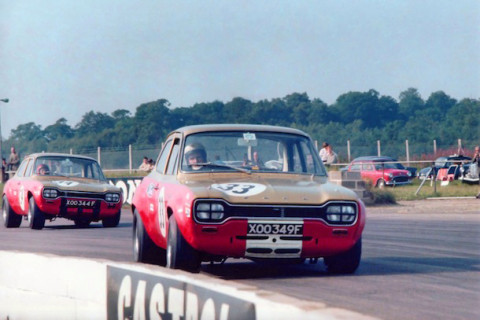
Production drawings were done by Ken Adam who was the production designer for the James Bond films and a bit of a hero of mine.
You may think the film was sappy, the child catcher was terrifying and the Corgi toy too quick to lose its tyres but I thought it was time to have a go at one of the most well known cars ever made.
My usual approach was to start with someone’s 3D CAD model but I didn’t think it was very well proportioned. I was lured by the appeal of the simple curves of the fenders and thought I’d have a go myself. Time to start with the production drawings.
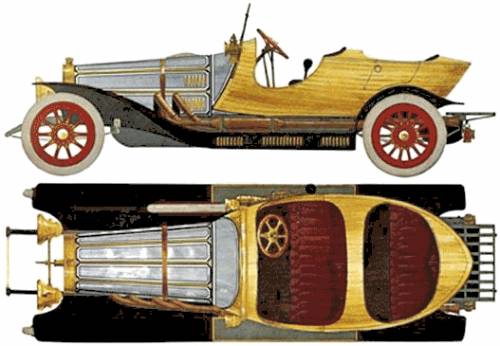
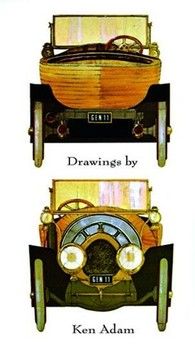
I also found a side photograph of one of the film cars which was a useful check against the drawings. I printed them all onto graph paper so I could take measurements from them and start putting it into the CAD. I wanted something easy first so started with the wheels. There’s quite a lot of detail here and getting them right gives any car a head start. The rears have 14 spokes and the front has 10 but there are also clamp bolts that hold the rims together and lots of detail around the hubs. The wheels were specially made for the film, hiding drum brakes inside them so it would look accurate for an Edwardian racer.
Once the wheels are done I created the assembly with them in the right place, adding the motor too so I’d have a sense of where things could go and any limitations in the body. Then I could start with the body shape, beginning with that very Bugatti-like radiator and making a swept blend to the circular shape at the back end of the hood. The fenders are probably a bit too thick for scale but I’ve gone for what will survive on a slot car track.
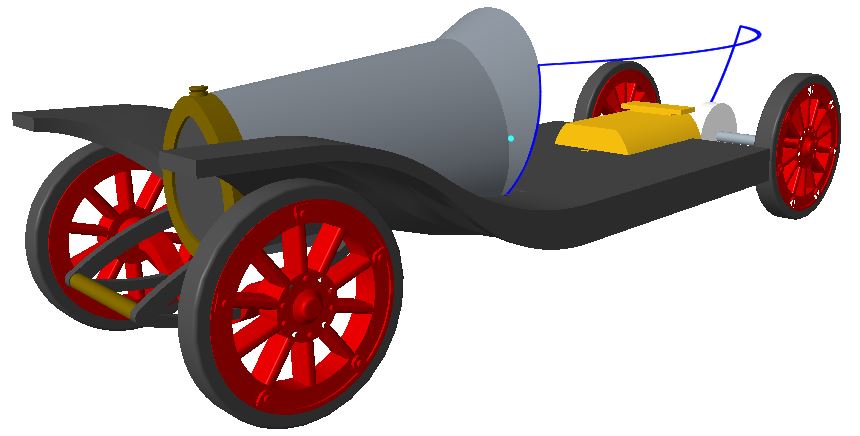
The rear bodywork really was made by a boat builder and it’s quite a tricky shape to make in a CAD system, especially if you’re as unskilled as I am. By this stage it’s probably been about 10-12 hours on the CAD and obviously plenty of time in front of that in the planning stage.
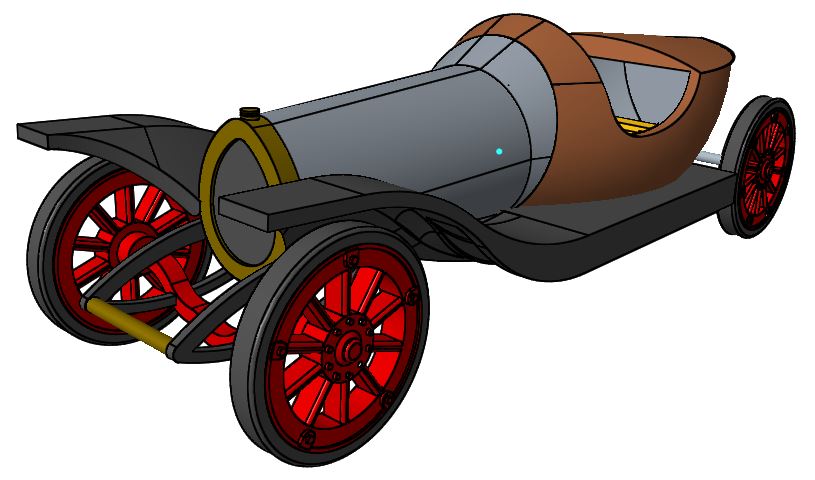
There’s lots of time spent re-checking bits because you don’t know what’s wrong until more is finished. However this is at the stage where the outer body shape is quite well defined and I’m making the seat spaces. Then it’s the rear fenders and I can start on the detail bits like the windscreen, lights, horn and outside gear lever.
I had decided the car won’t have suspension but it will need steering so I needed to sort out how that will work and keep the guide as hidden as possible yet still link up with the steering arms. I toyed with what to do with the wings but decided it’s probably one more headache than I need so I left them off, especially as folding them in like the Corgi toy interferes with the motor position.
It’s a very large car as you can see.
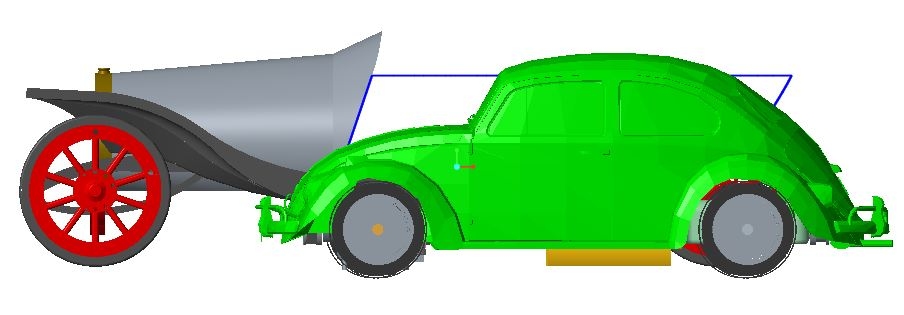
A bit more work and the seats are done although I hadn’t done the buttoned effect on the rear yet, dashboard is done and the bulkheads through the car that means it can be cast are done by this stage too. I had started on the rear fenders but need to tweak them to shape.
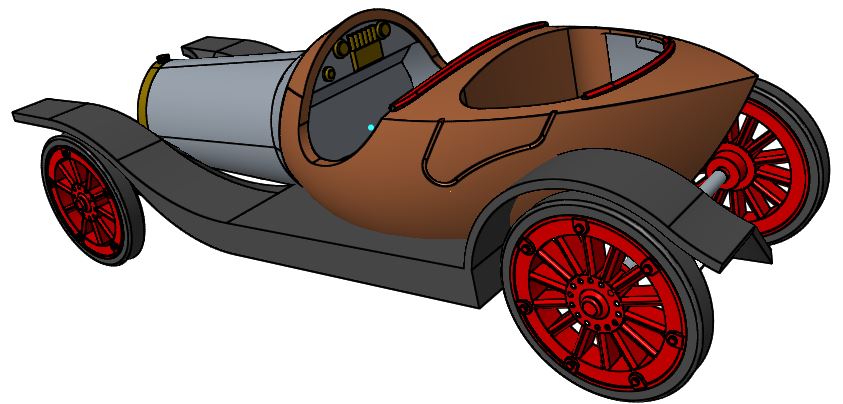
By this stage the rear fenders are a better shape and I had covered the rear axle gear too
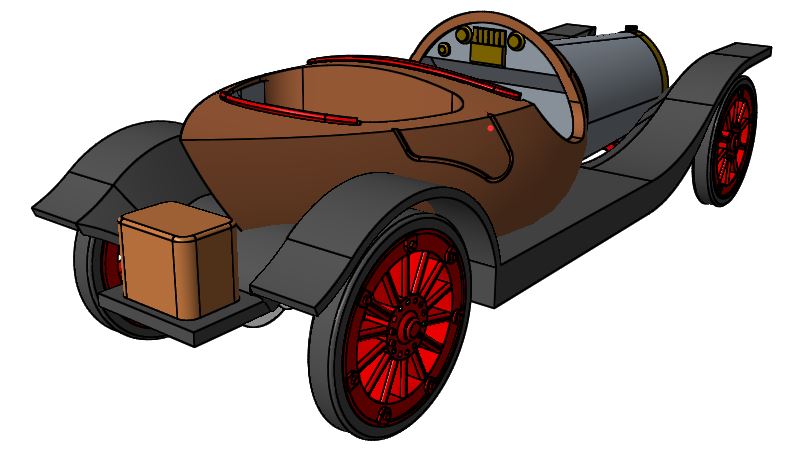
Underside scooped out so it can be resin cast
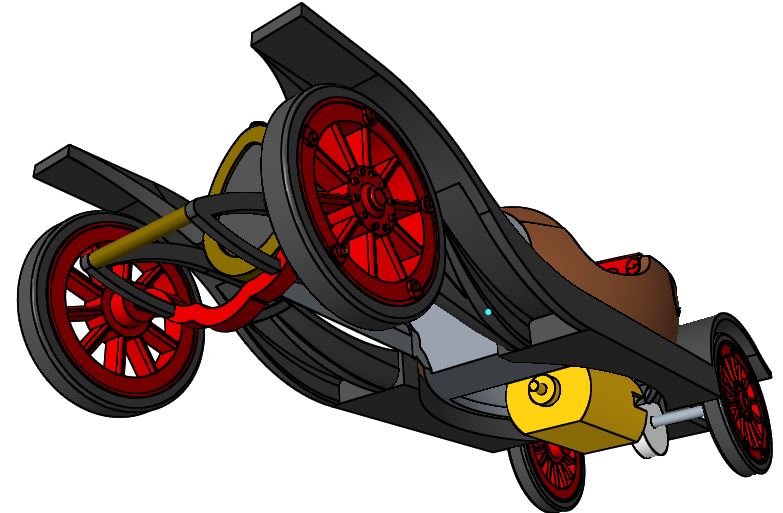
A bit more progress, but it’s frustratingly slow to get all of these things right! Exhaust is done here but this was a huge task as the muffler didn’t fit under the bodywork and matching the first pipe’s curve to the front fender was difficult as the pipe then needed to curve into the hood. The other pipes were tweaked to fit as the same radius didn’t quite look right although the pitch of the 4 pipes is even
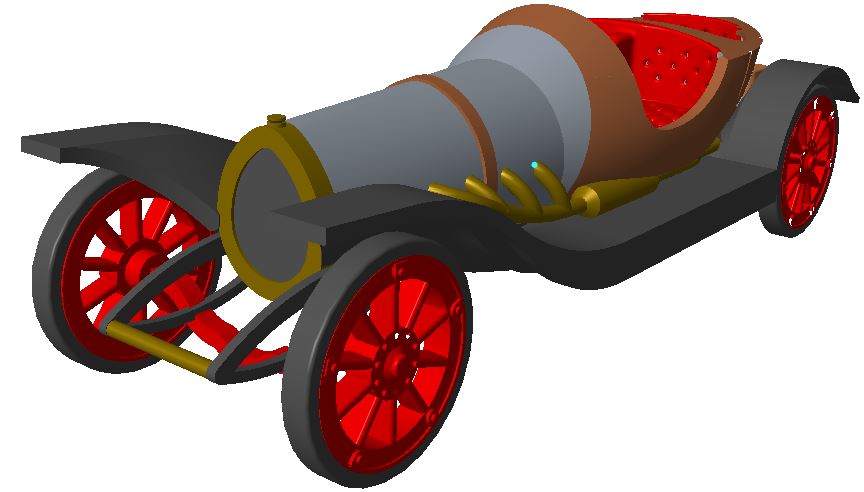
More difficulties as I did image searches of the car; there were 6 cars built for the movie (5 still exist), they’ve all been modified over the years and there are also some replicas around too. I got gradually better at spotting the differences! Here’s a potted history of the movie cars.
CHITTY 1
Pierre Picton owned GEN11 which was the primary road going vehicle, the car which Dick Van Dyke rolls out of the workshop. It was used in all bar two UK location driving shots. They drive to the beach in the vehicle. It is the car which sits on the beach, the car which delivers Sally Ann Howes to the gates of the Scrumptious estate, and the car which takes chase after the zeppelin. It is the car the Potts drive home in from the beach and the car which forces CUB1 into the duckpond on every occasion. Pierre owned the car since the early 1970’s after it completed its duties promoting the movie in the UK.
CHITTY 2
This car had vertical bars behind the radiator grille. The steering wheel is considerably darker in colour and the metal on the dashboard is matt finish rather than shining. It also had an engine and a second steering wheel on the floor which was a feature used in one scene. It appears rarely in the movie, though may have been the first car off the production line as it appears in the first scene that was shot involving Chitty. It also is heavily featured in pre filming publicity shots, and is the car test driven by rally driver Paddy Hopkirk.
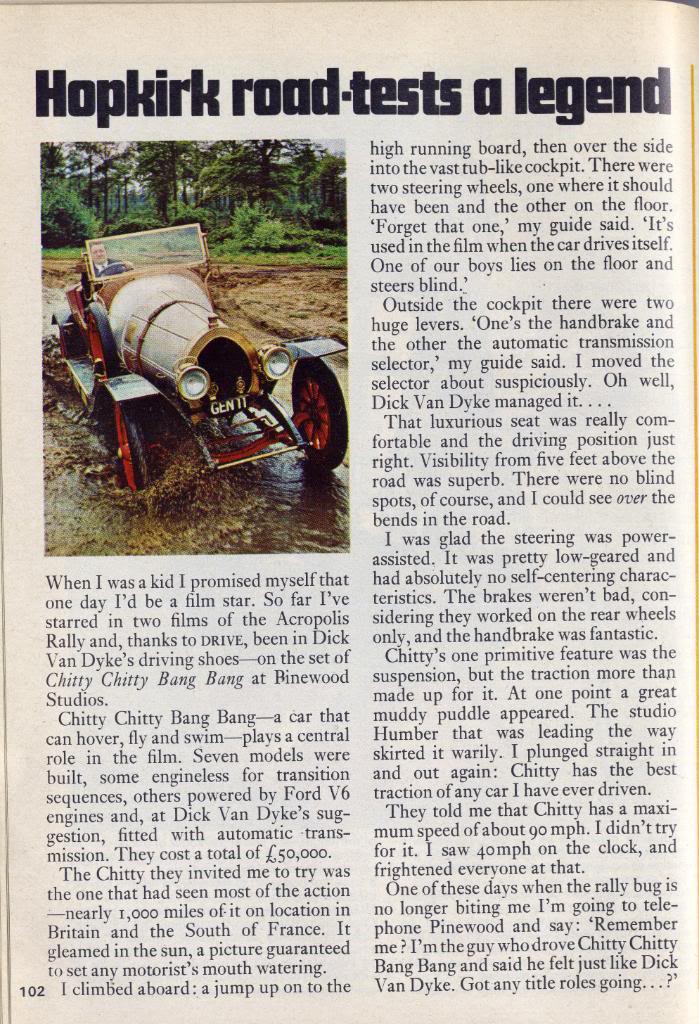
It appears in the shot where they are driving beside the train, in the shots where they are being harassed by James Robertson Justice from the car behind them (first driving scenes which were shot), in one passing shot on the way to the beach, and in the scenes shot in Bavaria where it comes to rest under the aqueduct and later when it is towed by infantry horses through the Town Square and into Neuschwanstein Castle shortly thereafter. It is also the car which drives itself into the castle to rescue our heroes during the overthrow of Bombhurst, and the car which descends the red staircase in triumph.
This car was in the USA immediately following the movie for promotional purposes. It vanished for a number of years only to turn up at the Cars of the Stars Museum in Keswick, England in 2000 which is where I first saw it!
CHITTY 3
This car appears to have had a removable chassis and was lighter in construction. From all accounts it was primarily mounted on a trailer for close up driving sequences and was used in the studio for some process flying and floating shots. The wings it sported were slightly different to the wings of the “flying version” (Chitty 4) It is also used in the studio pool for some shots during the transition to the water car sequence. Pierre Picton also acquired this version in the early 70’s. It was the second UK promotional vehicle, and had an engine added for this purpose. Mr Picton modified it somewhat to become part of his circus act. In the mid 1970’s it was sold to Heathfield Wildlife Park where it was on display in the park’s motor museum. In 1978 it was sold to The Rotunda in Folkestone, and in 1980 was auctioned at PInewood Studios where it was purchased by private collector Anthony Bamford of the JCB family.
CHITTY 4
This is the car with wings. It was the photographic model for the promotional image from the movie which featured on posters and merchandise. On screen it is the car which sprouts wings. It is used in a bulk of the process studio flying shots, it is the vehicle which lands in Vulgaria and the vehicle which sprouts wings and propellors in the castle forecourt before they leave Vulgaria.
The wings had a leading edge metal framework which housed folding propellors. This framework was covered by a rolling cover which was in place when the car sprouts wings and first flies from the cliff. This car also promoted the film in the USA, and was present at the New York opening. It was later sold to and appeared at The Cavalcade of Cars exhibit at the (now closed) Gaslight Village Amusement Park in Lake George, New York. It then was a feature at a Chicago Restaurant “The Retreat” before the venue went into receivership. The car was then auctioned in 2007 and sold to Ralph Spencer of Florida.
CHITTY 5
This car was built for one scene, the transition from car to hovercar. For this reason, costcutting is evident with aluminium being used on most features (radiator surrounds, exhaust pipes, windscreen) in place of brass. Aluminium may also have been used to stop the discolouration of the brass and copper in the sea water. This car was unceremoniously placed in the sea off the coast of France, with an air compressor nearby. The cast were ferried to the vehicle in motorised dinghys and on cue, the car backfired, two panels at the rear opened to release a propeller and an inflatable flotilla was pumped full of air under it pushing the hinged wheels outwards. At this point it was replaced by another car mounted atop a speedboat. Chitty 5 promoted the film in Australasia. It was star attraction at the 1970 Motor Show, and toured the country right through until 1974. It reappeared in 1983, the property of Luxafles, a canvas awning company and was regularly seen alongside their displays in shopping malls and promotional events. Luxafles fitted a GM Holden engine into the static vehicle. In 1991, it was sold to Peter Nelson of Cars of the Stars in Keswick, UK, and in 2000 he sold it to Barbara Broccoli’s EON productions. EON refurbished the car, painted some of the aluminium features gold and used the car throughout the world to promote the stage musical. This is the car which was famously banned from the Norwich Parade as it was not in possession of an MOT (roadworthyness) certificate.
A little more detail in place on my car, the screen is sized nicely and the spare wheel in place which needed a recess in the front fender. It’s far over enough to allow the boa constrictor horn I hope, but you never know until everything is in the model.
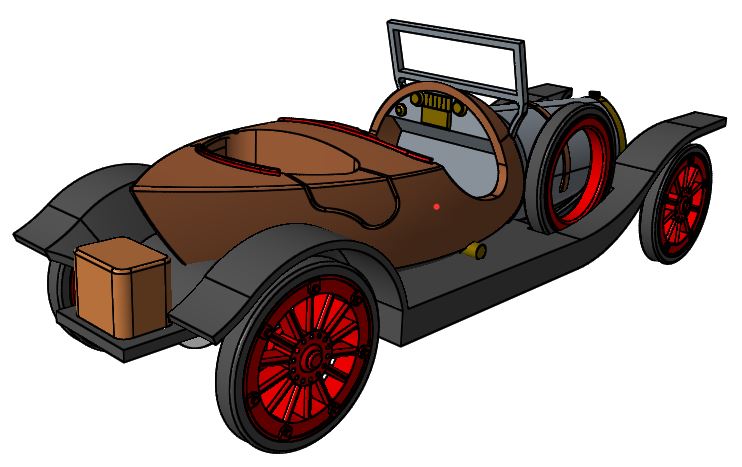
A few more details added, headlights really help!
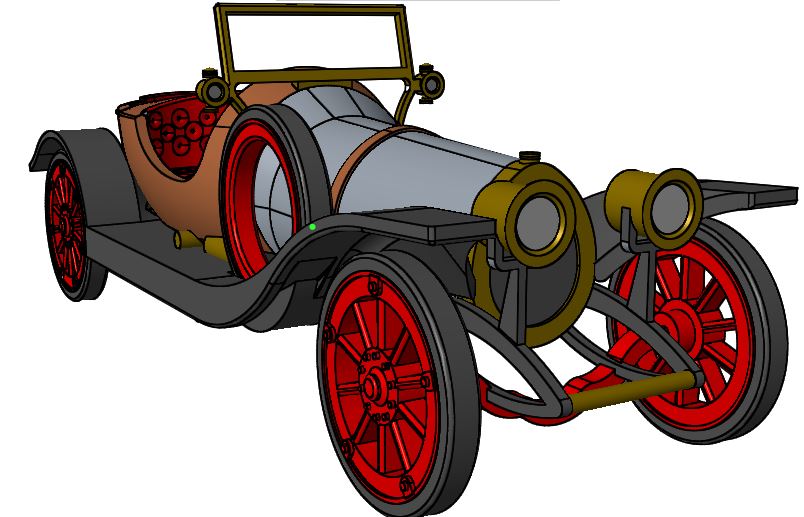
The lights, windscreen and a few other detail bits will be made separately as they’re just too fragile to put with the rest of the bodyshell. I decided to make them as SLS parts so they’d withstand the rigours of track action, when I did the CJ7 Jeep it’s windscreen was particularly fragile without brass bar glued behind it.
Extra detail on the headlamps and by now I’ve got the front axle and hubs worked out. The guide will be quite a long way back to keep it out of sight, just like the Scalextric Bentley and Alfa Romeo. I know this isn’t optimal for racing, but from what I remember my old blue Alfa cornered really well (at least compared to the Bentley) so I’m hoping it will work out alright. The guide on the Italian Job coach is on the second axle and that seems to handle in a very forgiving way, especially considering its size which makes Chitty look svelte.
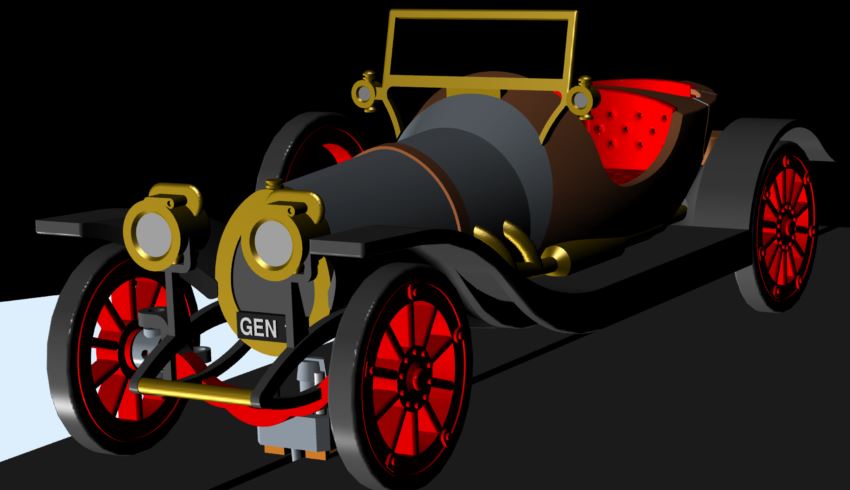
I then spent a frustrating few hours sorting out the motor pod and it’s mountings into the resin bodyshell. On the outside I did the numberplates, louvres on the running boards and hood hinges.
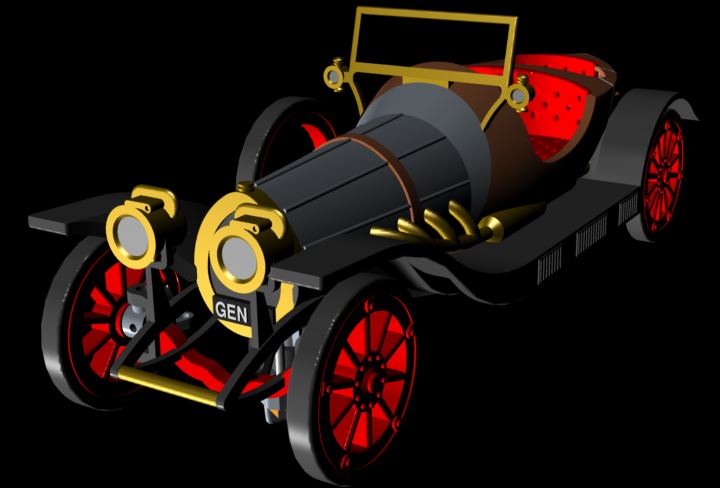
And the tail lights
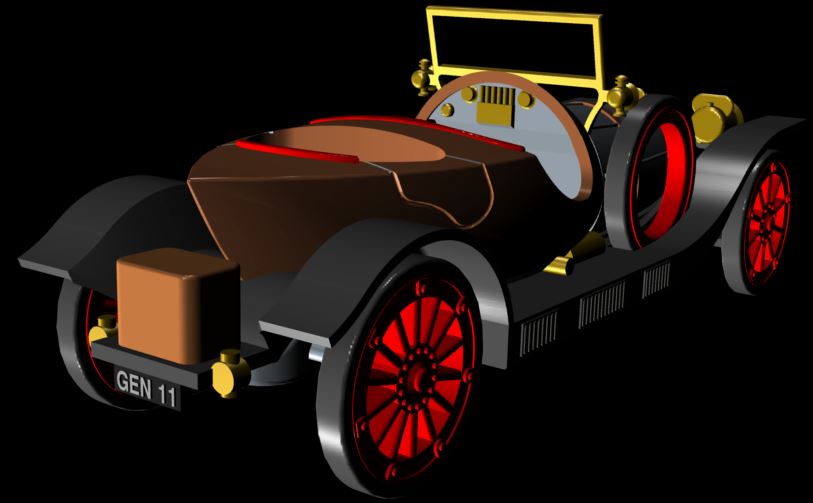
Next I added the steering wheel, gear lever and horn which will be separate parts in the kit. I’ve also put recesses on the boat where the wooden sections were joined. This was incredibly slow work but hopefully it will help with the final paint job.
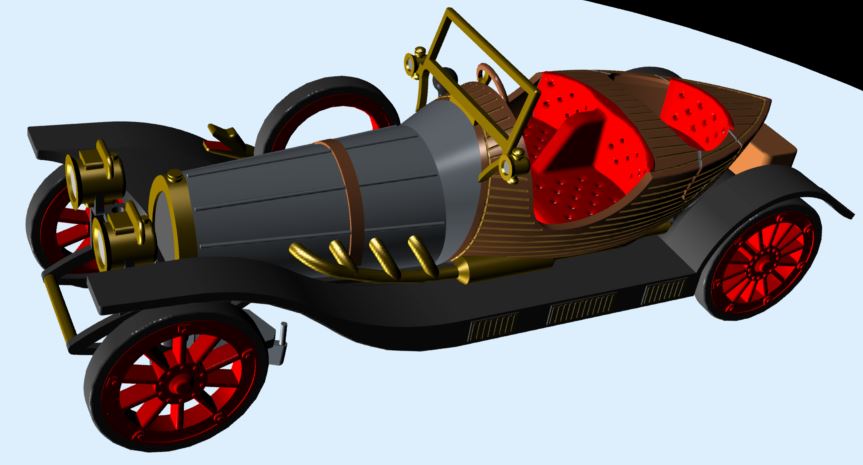
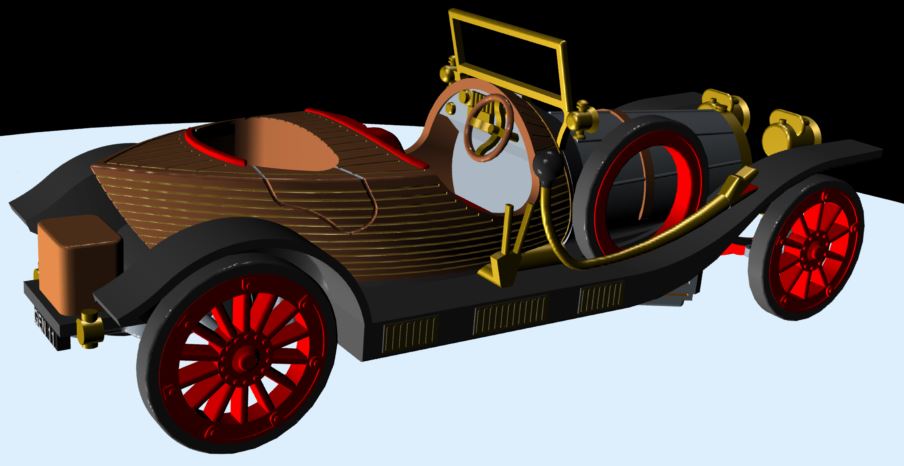

Just the last few details done. Hood strap, buckles that hold it in place, rear door handles and louvres on the hood.
I had a go at the steering mechanism but there were lots of clashes between the suspension and the steering linkage. I needed to come up with a different hub design so I could get more clearance on the chassis.
Looks pretty with the polished brass though.
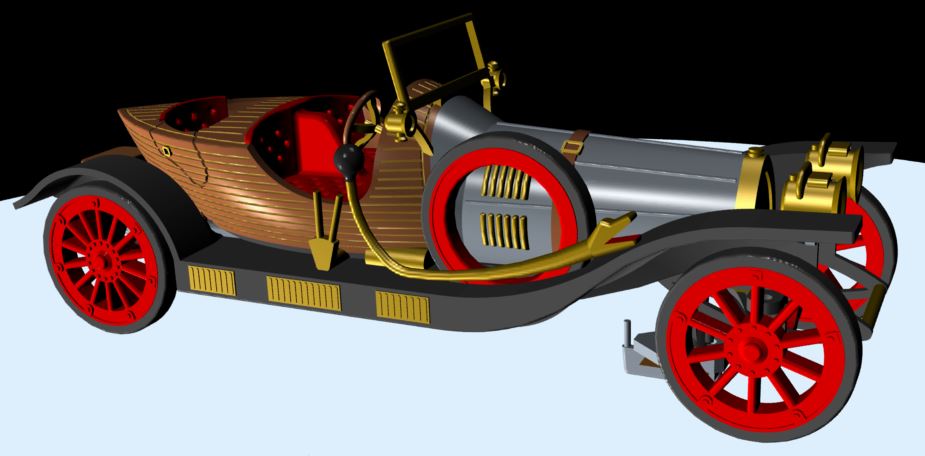
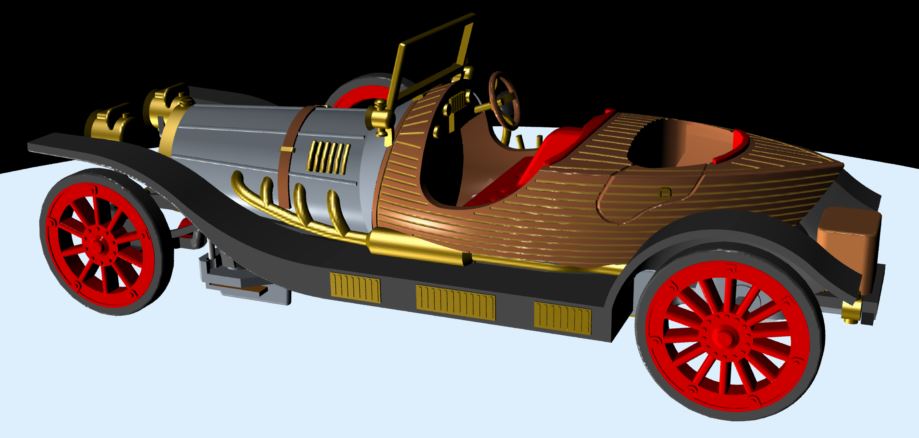
Here’s the plan: 3D print the bodyshell, silicone mould and resin cast it. The separate parts will be 3D printed and polished in SLS. How hard can it be?
Here’s the 3D printed master, with my 1967 Mini Cooper for size comparison
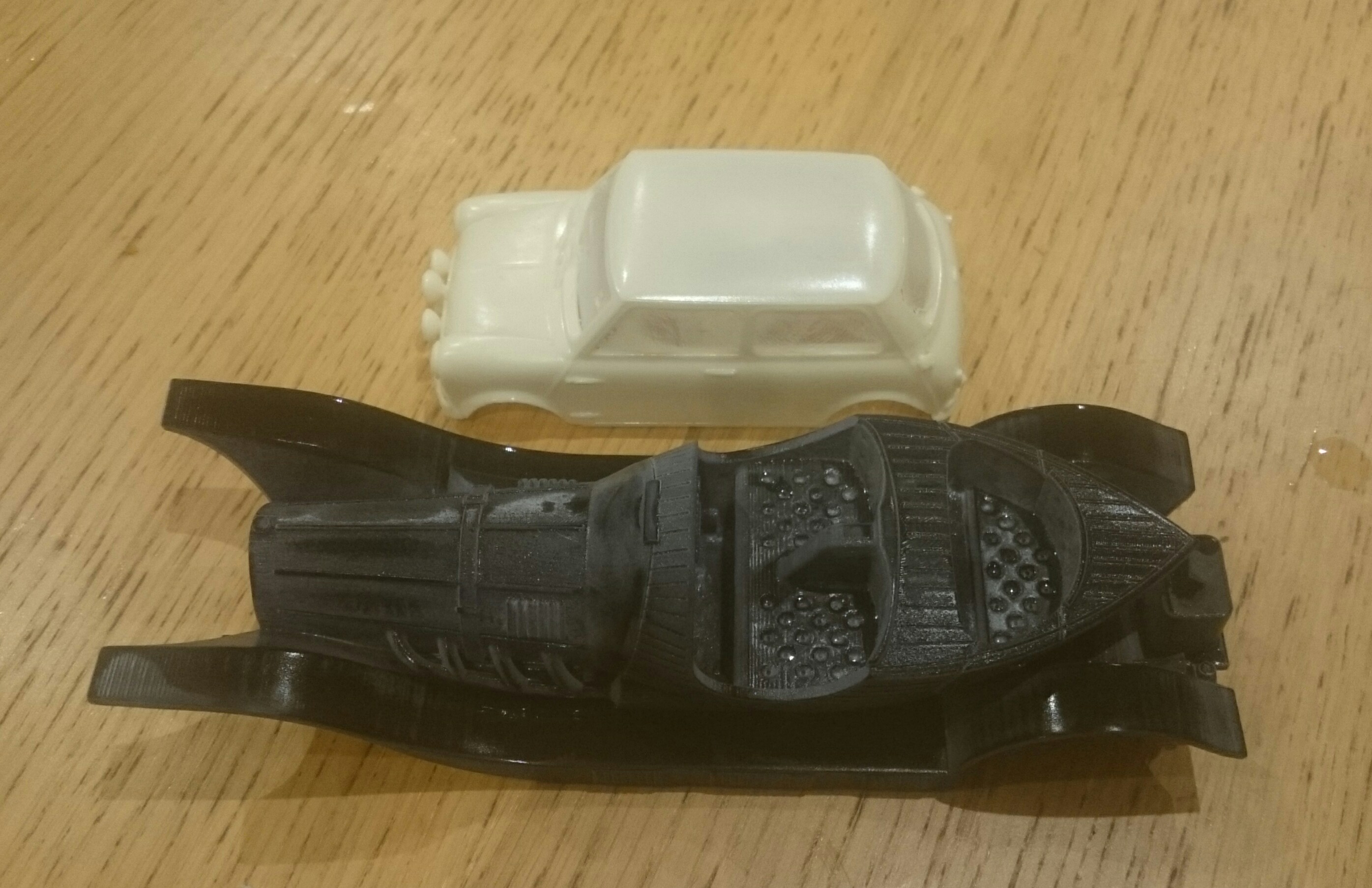
Mould made, resin cast bodyshell done
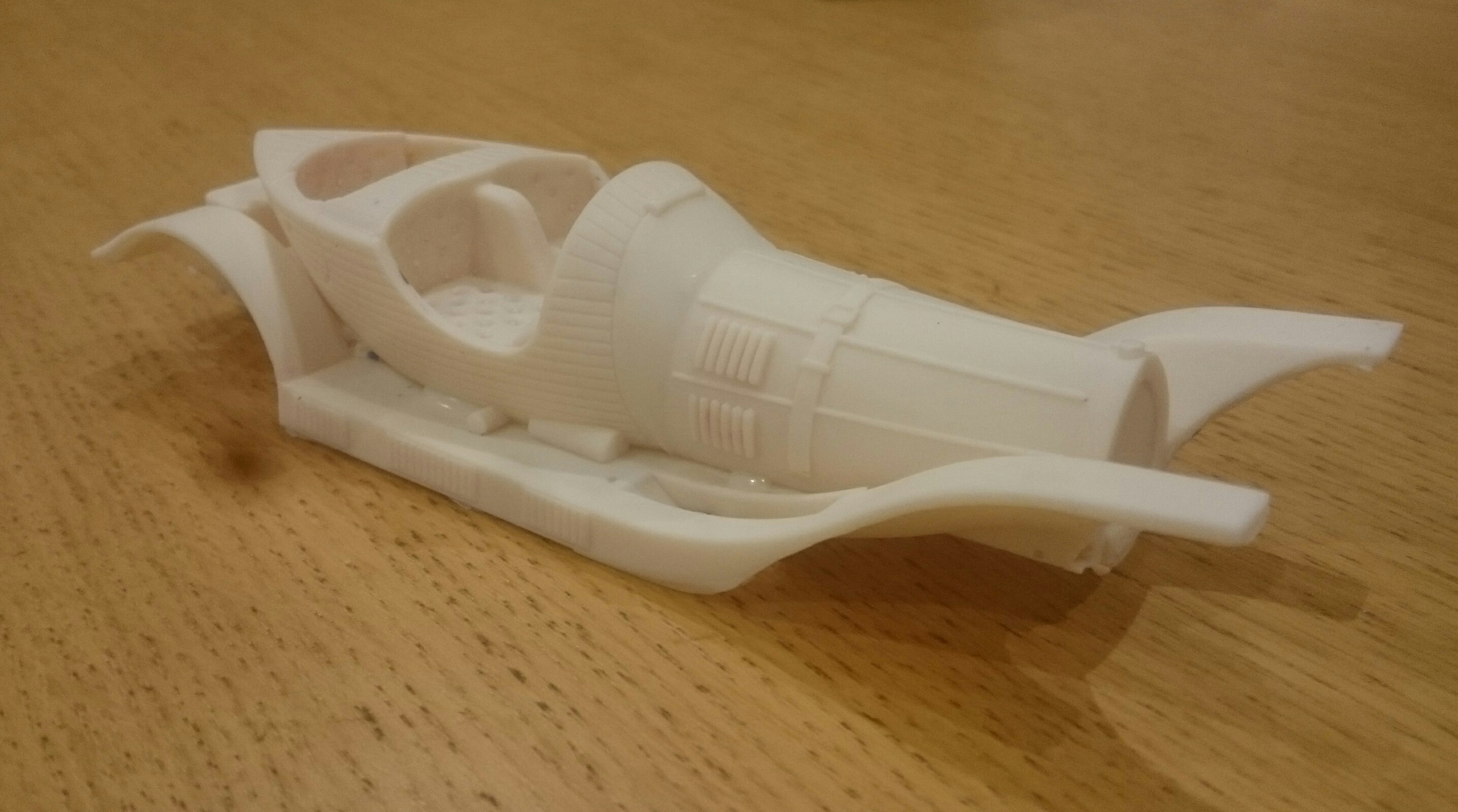
Running gear in place
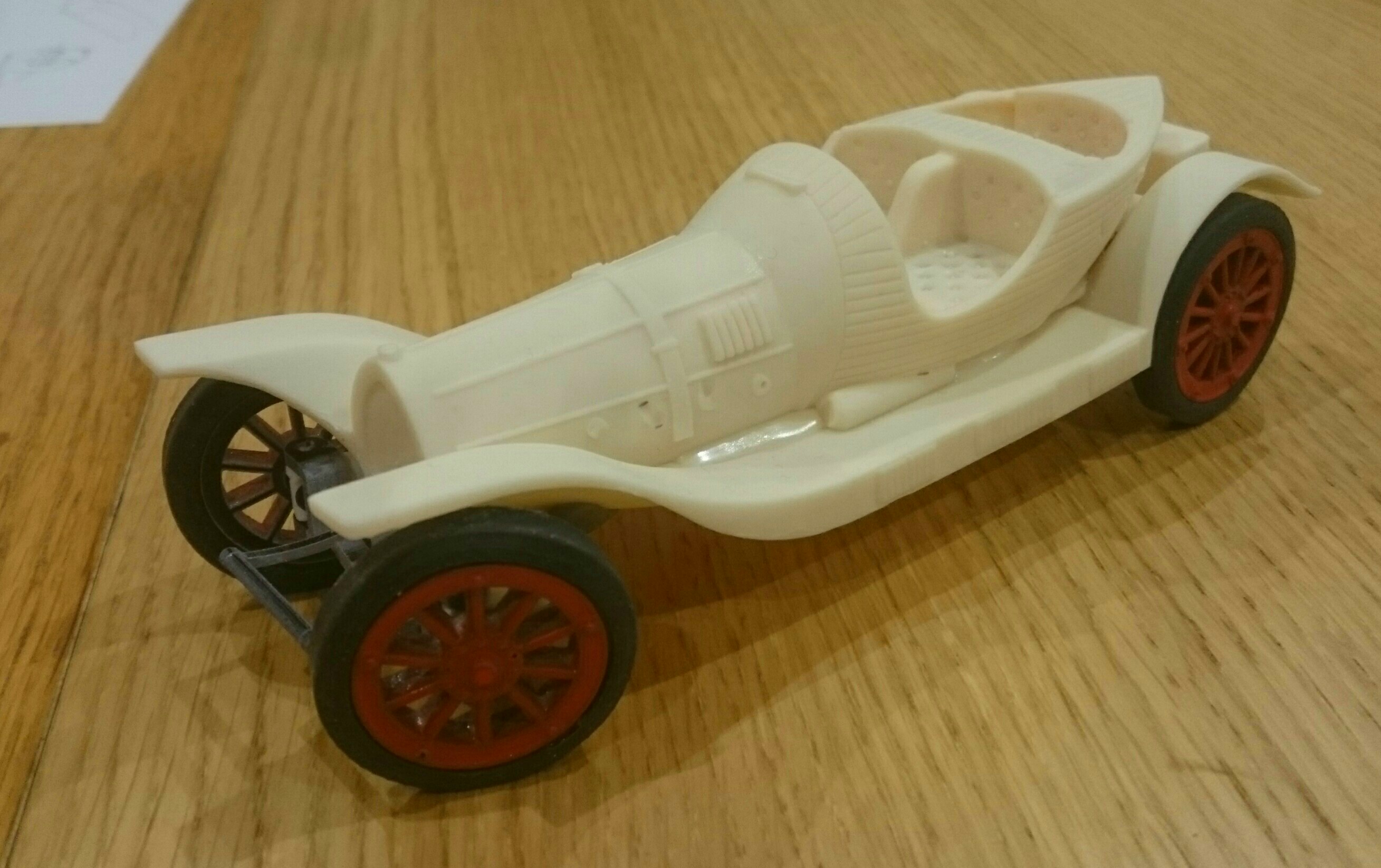
Here’s where I decide the tires need to be custom made as the Scalextric Bentley ones are too high profile on the sidewalls and I really want the correct tread pattern and GoodYear lettering.
With the correct tires in place it looks a whole lot better, it even detracts from my terrible painting.
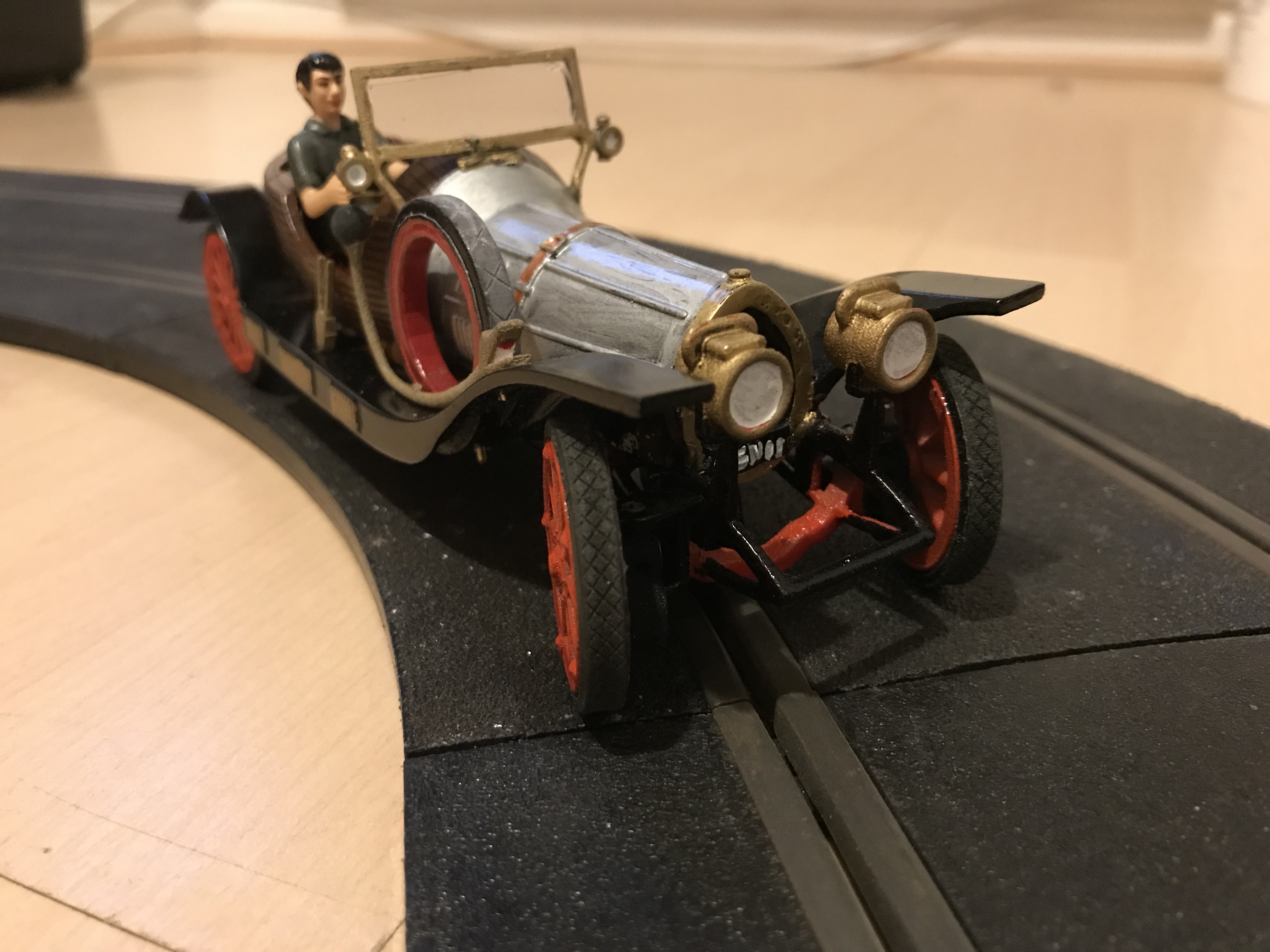
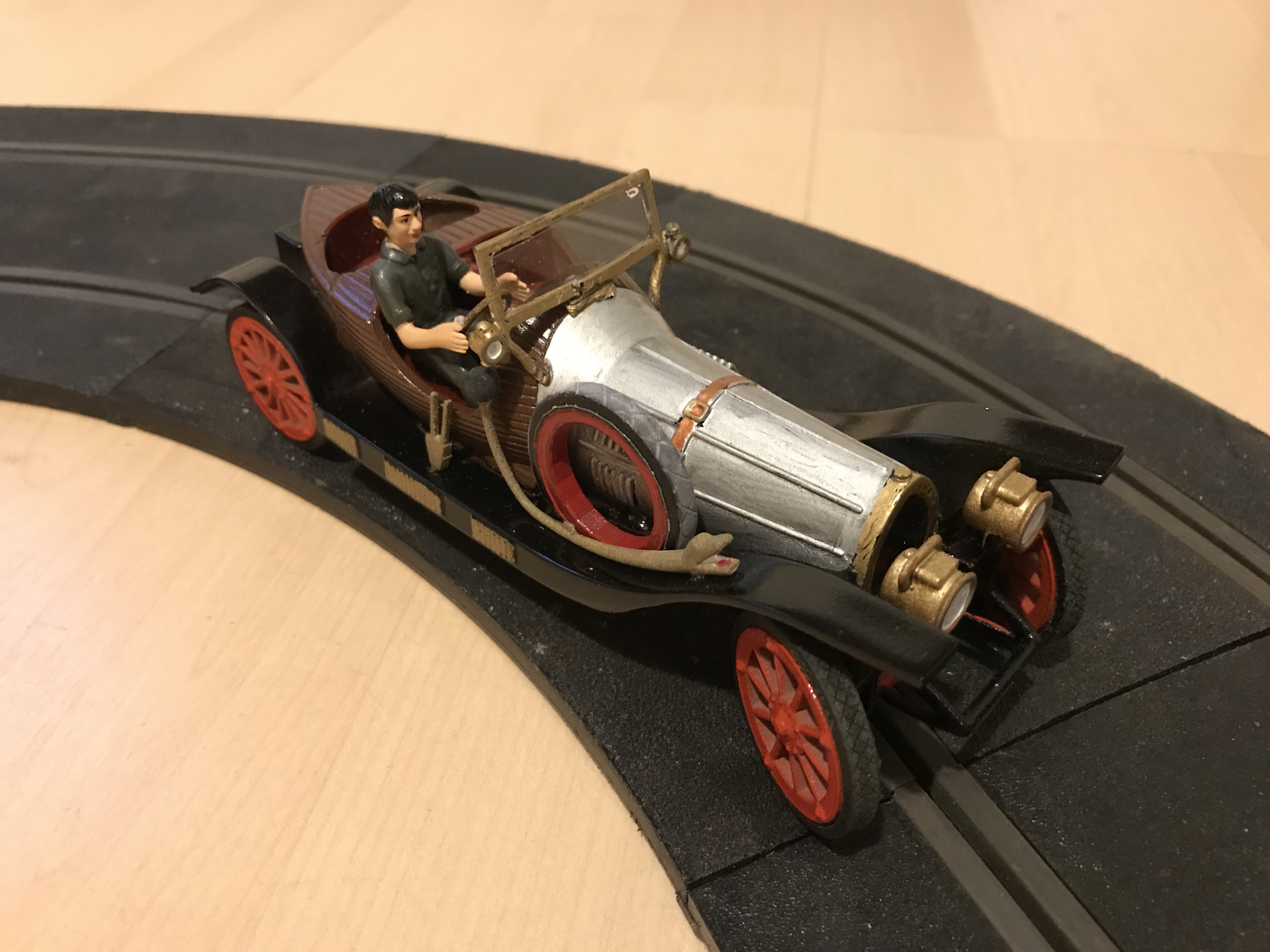
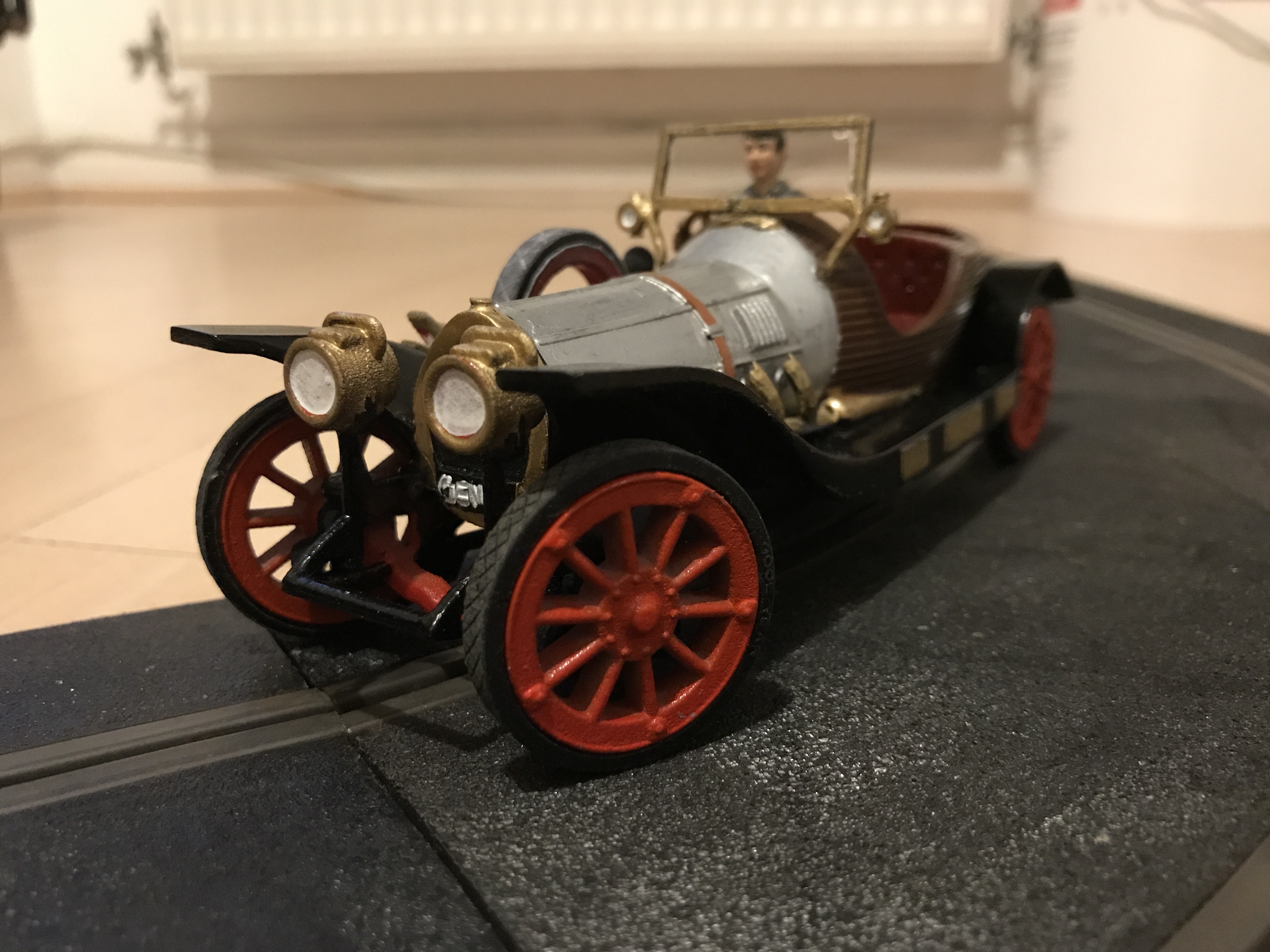
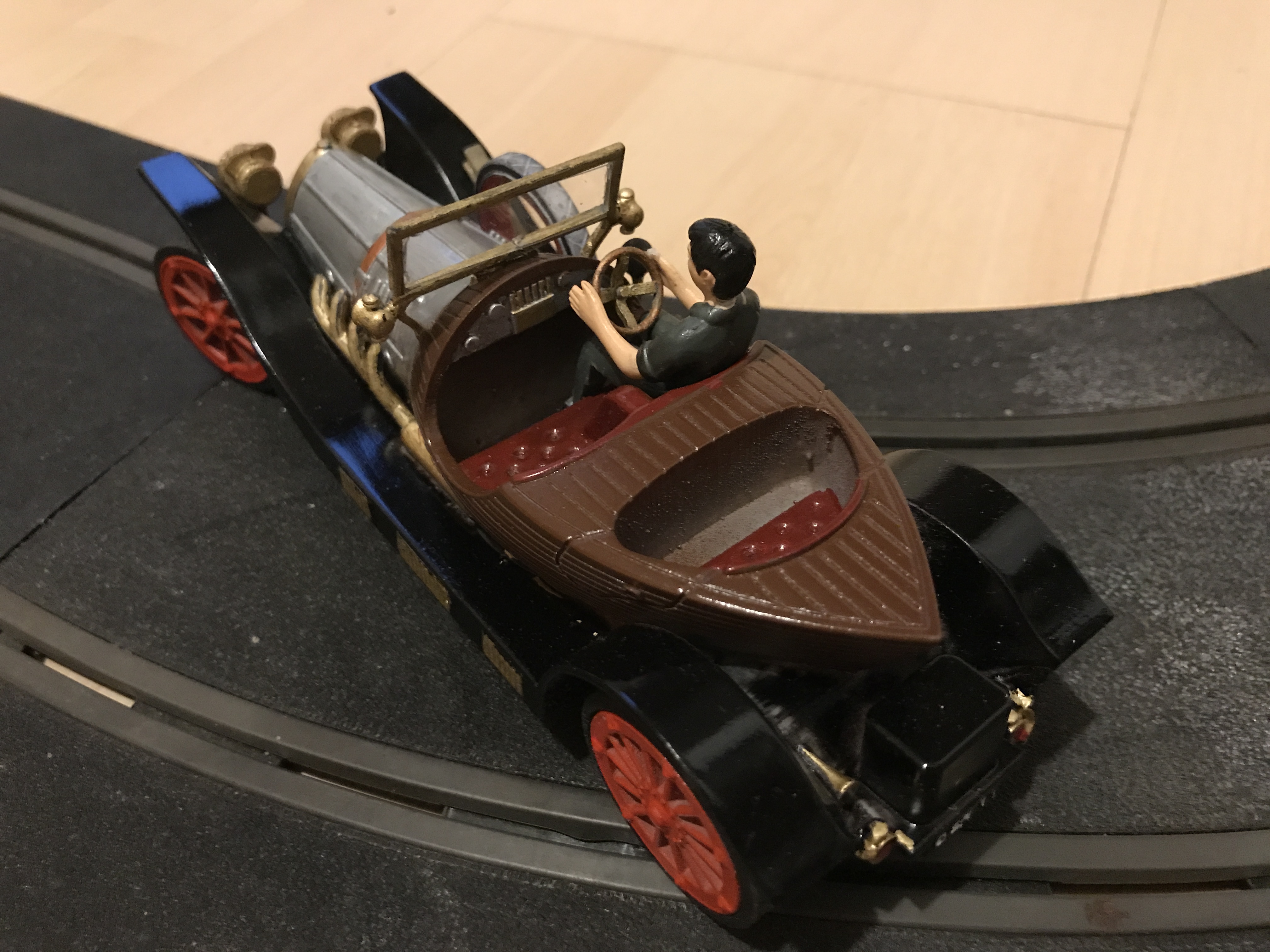
I’ve been a little pushed for time recently (recently? Feels like about a year!) so I only finished this on the day of the UK Slot Car Festival. I drove it about 3 laps and then handed it over to someone else so I could get it on video. With a little time you can get the tail to slide out nicely!
